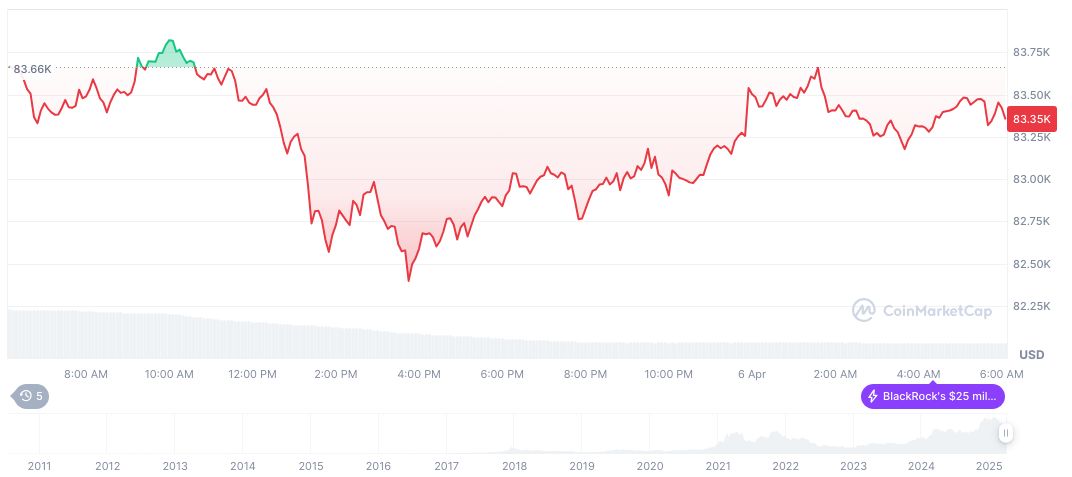 CaryptosHeadlines Media Has Launched Its Native Token CHT.
Airdrop Is Live For Everyone, Claim Instant 5000 CHT Tokens Worth Of $50 USDT.
Join the Airdrop at the official website,
CryptosHeadlinesToken.com
CaryptosHeadlines Media Has Launched Its Native Token CHT.
Airdrop Is Live For Everyone, Claim Instant 5000 CHT Tokens Worth Of $50 USDT.
Join the Airdrop at the official website,
CryptosHeadlinesToken.com
- U.S. stock market loses 11.1 trillion dollars; tariffs blamed for the impact.
- Bitcoin stabilizes above $80K amid stock decline.
- Crypto resilience noted during market turmoil.
On April 6, 2025, the U.S. stock market lost $11.1 trillion in 44 days, affecting 38% of GDP. Aggressive tariff policies impacted investor confidence, leading to extensive selloffs across major indices.
The loss highlights global economic risks, particularly in relation to international trade policies. Immediate reactions are mixed, with experts like Jay Woods expressing concern over a potential recession that “could end the bull market.”
Market Shock: Tariffs Trigger Trillion-Dollar Selloff
President Trump’s tariff announcement is central to the stock market’s severe declines. The economic measures introduced significant volatility, driving investors to pull back. The Dow Jones and Nasdaq reported a substantial percentage of losses amid the turmoil. The immediate implications suggest a potential recession fueled by trade policy fears.
Market responses have been volatile as investors seek security in the wake of aggressive tariffs. Analysts, such as Kathleen Brooks, caution that continued trade tensions may hinder economic stability. Jay Woods warned:
“If we are to punch back, you could have damaging effects to not only the tech sector, but the economy overall. This could throw us into a recession and could end the bull market as we know it.”
Bitcoin’s Steadfast Role as $11 Trillion Vanishes
Did you know? The $11.1 trillion loss in 44 days represents a sharper immediate market decline than the March 2020 COVID-19 crash, emphasizing the significant economic shock linked to aggressive trade policies.
Bitcoin (BTC) maintained stability amid the stock market’s decline, trading at $82,488.46. Its market cap stands at 1.637 trillion, with dominance of 62.28%. Over the past 90 days, its price fell by 19%. This data provides insight into BTC’s role as a market hedge, sourced from CoinMarketCap.


The Coincu research team indicates the need for strategic financial adjustments in response to elevated market risks. Historical data suggest recovery could align with traditional market cycles, influenced by regulatory and technological developments impacting investor sentiment.











